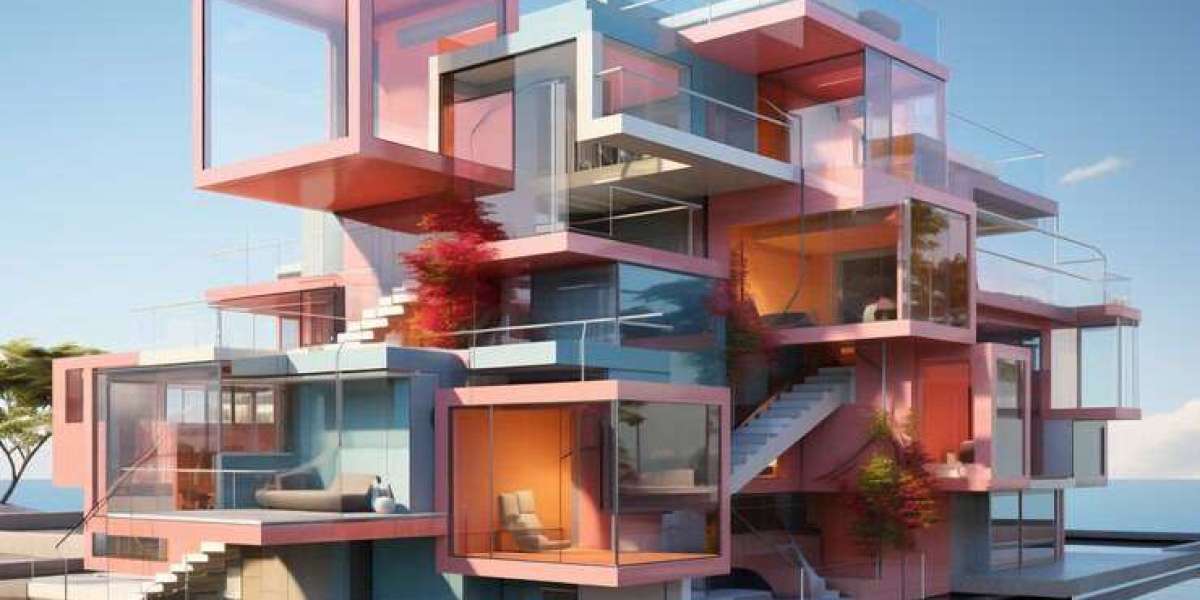The real estate industry has always been one that thrives on visual appeal. From the earliest hand-drawn sketches to the adoption of photography, visual representation has been a cornerstone of property marketing. As technology advances, so too does the ability to create increasingly sophisticated and immersive visuals. Among the most transformative of these advancements is 3D architectural rendering, a technology that is rapidly reshaping the future of real estate marketing. This blog will explore how 3D architectural rendering is revolutionizing the industry, its benefits, and its potential future developments.
1. The Evolution of Real Estate Marketing
Real estate marketing has come a long way from its humble beginnings. In the past, properties were marketed using basic drawings or photographs, often accompanied by a descriptive text. This approach was functional but limited in its ability to convey the true essence of a property. As technology evolved, so did marketing techniques. The advent of digital photography, video tours, and virtual reality (VR) provided real estate professionals with new tools to showcase properties in more engaging ways. However, 3D architectural rendering represents a quantum leap in this evolution, offering unparalleled levels of detail, accuracy, and interactivity.
2. What is 3D Architectural Rendering?
3D architectural rendering is the process of creating three-dimensional images or animations that showcase the physical characteristics of a building or interior space. These renderings can be incredibly detailed, providing a realistic depiction of a property long before it is physically built. Using specialized software, architectural rendering services can create lifelike images that include everything from the texture of materials to the play of light and shadow. This technology is not just about creating static images; it can also produce immersive 3D animations that allow potential buyers to take virtual tours of a property, offering an experience that is as close to reality as possible.
3. The Role of 3D Architectural Rendering in Real Estate Marketing
The impact of 3D architectural rendering on real estate marketing cannot be overstated. Here’s how it is revolutionizing the industry:
a. Enhanced Visualization
One of the most significant advantages of 3D architectural rendering is its ability to provide enhanced visualization. Traditional photographs and videos can only capture what already exists. In contrast, 3D renderings allow for the visualization of properties that are still in the planning or construction phase. This capability is particularly useful for off-plan sales, where buyers need to rely on their imagination and limited 2D plans. With 3D rendering, potential buyers can see exactly what a property will look like, right down to the smallest details, long before it is completed.
b. Improved Marketing Strategies
3D architectural rendering services offer real estate professionals a powerful tool for improving their marketing strategies. High-quality 3D renderings can be used across a variety of marketing channels, including websites, social media, email campaigns, and print materials. They can also be integrated into virtual reality (VR) and augmented reality (AR) experiences, providing an even more immersive way for buyers to explore properties. This versatility allows for more creative and effective marketing campaigns, helping to attract a broader audience and generate more leads.
c. Greater Buyer Engagement
The immersive nature of 3D renderings and animations significantly increases buyer engagement. When potential buyers can virtually walk through a property, explore different rooms, and even change design elements like wall colors or furniture placement, they become more emotionally invested in the property. This increased engagement often translates into higher conversion rates, as buyers feel more confident in their decision-making process.
d. Cost and Time Efficiency
While creating high-quality 3D renderings requires an initial investment, it can save both time and money in the long run. Architectural rendering services can quickly produce multiple variations of a design, allowing for easy adjustments based on client feedback. This flexibility reduces the need for costly revisions during the construction phase. Additionally, by providing a clear and detailed visualization of the final product, 3D renderings can help to avoid misunderstandings and miscommunications between architects, builders, and clients.
e. Competitive Advantage
In a crowded real estate market, standing out from the competition is crucial. Offering potential buyers a 3D-rendered preview of a property gives real estate professionals a significant competitive advantage. It demonstrates a commitment to using the latest technology and provides buyers with an unparalleled level of service. Properties marketed with 3D renderings are more likely to capture the attention of buyers and can often command higher prices as a result.
4. The Integration of 3D Animation Services
While static 3D renderings are powerful, the integration of 3D animation services takes real estate marketing to the next level. 3D animations allow for dynamic presentations of a property, showcasing how a space can be used, how light moves through it at different times of the day, or how it interacts with its surroundings. Here’s how 3D animation services are enhancing real estate marketing:
a. Virtual Walkthroughs
3D animations enable virtual walkthroughs that provide potential buyers with a realistic tour of a property. These walkthroughs can be customized to highlight specific features or areas of the property, providing a guided experience that can be tailored to the buyer’s interests. Virtual walkthroughs are particularly valuable for international buyers or those unable to visit a property in person.
b. Interactive Experiences
With the integration of 3D animation services, real estate professionals can offer interactive experiences where buyers can control the walkthrough, explore different design options, or view the property from various angles. This level of interactivity makes the buying process more engaging and helps buyers to better understand the space and its potential.
c. Storytelling Through Animation
3D animations allow real estate professionals to tell a story about a property, showing not just what it looks like, but how it feels to live there. By simulating everyday activities, such as cooking in the kitchen or relaxing in the living room, animations can evoke an emotional response from buyers, making the property more appealing.
d. Marketing Flexibility
3D animations can be used in a wide range of marketing materials, from website videos to social media posts. They are particularly effective in presentations or during open houses, where they can be displayed on large screens to give potential buyers a vivid sense of the property. Additionally, 3D animations can be adapted for use in VR or AR applications, offering even more immersive experiences.
5. The Future of 3D Architectural Rendering in Real Estate Marketing
As technology continues to advance, the future of 3D architectural rendering in real estate marketing looks incredibly promising. Here are some trends and developments that are likely to shape the industry:
a. Real-Time Rendering
Real-time rendering technology is set to revolutionize the way 3D architectural renderings are created and used. With real-time rendering, changes to a design can be made instantly, allowing for immediate feedback and adjustments. This technology will enable even more interactive and personalized experiences for buyers, as they will be able to see changes in real-time as they customize their potential new home.
b. Integration with AI and Machine Learning
The integration of artificial intelligence (AI) and machine learning with 3D architectural rendering services is another exciting development. AI can be used to automate certain aspects of the rendering process, making it faster and more efficient. Machine learning algorithms can analyze buyer preferences and behavior, allowing for the creation of more targeted and effective marketing campaigns.
c. Advanced VR and AR Experiences
As VR and AR technologies continue to improve, their integration with 3D architectural rendering will become even more seamless. Future VR and AR experiences will likely offer even higher levels of realism and interactivity, allowing buyers to explore properties in ways that were previously unimaginable. For example, buyers might be able to use AR to overlay a 3D rendering onto the physical space where a building will be constructed, providing a true-to-life preview of the finished property.
d. Blockchain and Digital Ownership
The future of real estate marketing may also involve the integration of blockchain technology and digital ownership. With the rise of NFTs (non-fungible tokens), it’s possible that digital versions of 3D renderings could be bought, sold, and traded as unique assets. This could open up new avenues for real estate marketing, where digital ownership of a property’s design becomes part of the transaction process.
6. Conclusion
The future of real estate marketing is undeniably intertwined with the continued advancement of 3D architectural rendering and animation services. These technologies offer real estate professionals the tools to create highly detailed, immersive, and interactive experiences that engage buyers in ways that were previously impossible. As architectural rendering services continue to evolve, integrating real-time rendering, AI, and advanced VR/AR experiences, the potential for innovation in real estate marketing is limitless. The future promises not only more effective marketing strategies but also a more personalized and engaging buying experience, ultimately reshaping the real estate industry as we know it.



